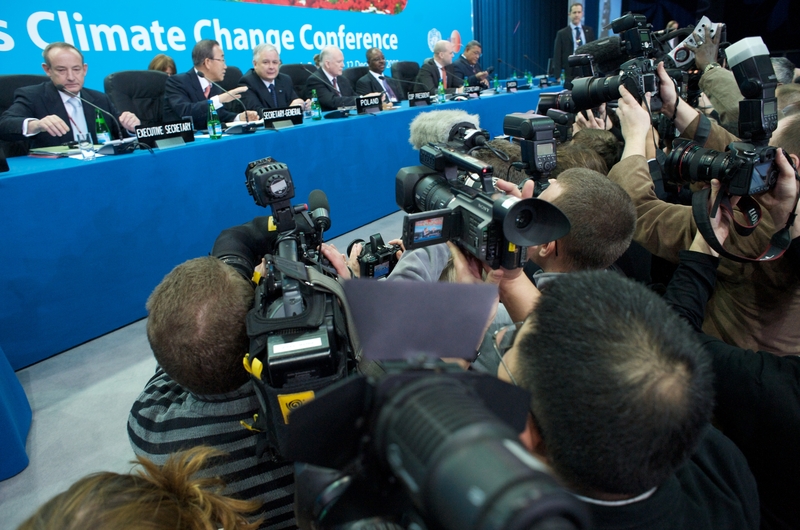
European Union climate policies, such as carbon tariffs for certain imported goods, are easier to negotiate than worldwide agreements. However, their ability to reduce global emissions is hampered by the complexities of international trade. Credit: Mattmcinnis |Dreamstime.com.
Global problems like climate change require global solutions, which are notoriously difficult to negotiate. In the absence of worldwide agreements, smaller unilateral policies may provide valuable lessons for the rest of the world. A good example, says AAE professor Thomas Rutherford, is renewable energy.
“Germany and Denmark pioneered large government subsidies for wind and solar energy and their citizens were willing to pay higher electricity prices,” explains Rutherford. “Without these early examples of adding renewable energy to national power grids, we would have never known that it’s feasible to achieve as high a proportion as we have.”
Now, the European Union is taking the lead on another policy aimed at reducing global carbon emissions: a carbon tax that only applies to certain goods imported by its 27 member countries. This import tariff should reflect the amount of carbon embodied in the production of cement, iron, steel, aluminium, fertilizers, electricity and hydrogen. The transitional phase of the EU Carbon Border Adjustment Mechanism (CBAM) for these goods began in October 2023.
During this phase, producers and import authorities have to report the volume of imported goods and estimate their embodied carbon content, but they don’t pay any fees yet. The EU will use the collected information to decide on the tariffs it will begin to charge in 2026.
This could become the world’s first large-scale test of unilateral border carbon adjustments (BCAs) for globally traded goods. But Rutherford, who has studied the economic impact of BCAs since the early 1990s, has mixed feelings about it.
“The EU deserves credit for taking a step in the right direction, but implementing CBAM will present several challenges,” he says. “First, measuring the carbon content of imported goods is complicated. Second, the program can be exploited due to its built-in protection for domestic industries. Third, the intended reductions of global emissions may not be realized because countries with ‘dirty’ production methods can easily export their goods to other countries to avoid the EU tariff.”
A long-running theme of Rutherford’s research is the importance of evaluating a policy’s effectiveness with model-based simulations. His preferred tool, known as computable general equilibrium (CGE) models, has a strong foundation in economic theory. It also incorporates empirical input/output data for trading goods and services between different sectors and different countries from a large global trade database. What distinguishes CGE from other models is its ability to model both supply and demand so that it can predict how prices of goods and services respond to market changes.
That price responsiveness, says Rutherford, is especially important for unilateral BCAs because they create spillover effects for the rest of the world. In the case of CBAM, spillover effects from emissions pricing by the EU coalition would cause increased emissions in other countries, or “carbon leakage,” for two main reasons.
First, when regulated carbon-intensive companies reduce production due to higher operating costs, production by less regulated manufacturers increases (competitiveness channel). Second, when regulations reduce the demand for fossil fuels in some parts of the world, their global prices will fall, which stimulates the demand for fossil fuels in unregulated regions (fossil fuel market channel).
Rutherford and his colleagues used CGE models to quantify carbon leakage when a coalition of countries implements a unilateral, uniform carbon tax. He found a leakage rate of about 25% without BCAs, averaged across traded goods. This means a one-ton reduction of emissions within the coalition would be offset by a 250 kg increase of emissions in the rest of the world. BCAs could lower that leakage rate to between 15% and 20%.

Reducing carbon leakage is good. But do BCAs actually reduce global emissions, compared to the absence of climate policies? The ability to export goods to coalition countries should be an incentive for non-coalition countries to lower their emissions. However, those exports are a small fraction of global exports, and BCAs cannot control price responses on the fossil fuel market. This, says Rutherford, is why unilateral climate action has a negligible effect on global emissions and the cost of reducing them. BCAs may also encourage protectionism because tariffs only affect the foreign competitors of domestic manufacturers.
Another challenge: determining the tariff charge, which is supposed to reflect the embodied carbon content of various imported goods. Consider the example of electricity from nuclear power plants. It comes from splitting uranium, which doesn’t generate emissions. But should the tariff for imported electricity also account for the cement from emissions-intensive manufacturing that was needed to build the plant in the first place?
Given these challenges, it is premature to rule out alternative climate policies, says Rutherford. Examples include environmental markets, such as cap-and-trade programs for power plants where the cost of tradeable emission permits should reflect the social cost of carbon, or using revenue from a domestic carbon tax to fund public goods. The latter is similar to the EU fuel tax that makes gasoline more expensive in Europe than the United States.
“At first glance, BCAs sound more feasible than international climate policies, but our analyses have shown that they don’t move the needle on global emissions as much as some proponents claim,” says Rutherford. “In my mind, the idea that trade is a panacea is incorrect.”